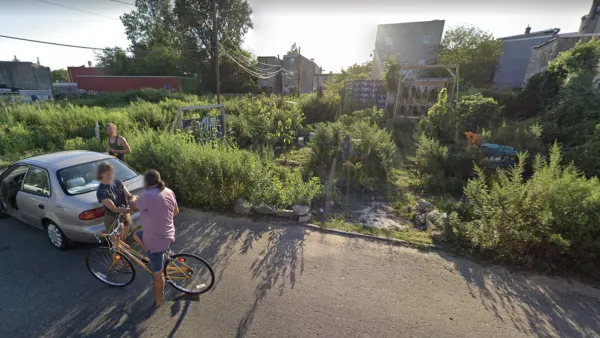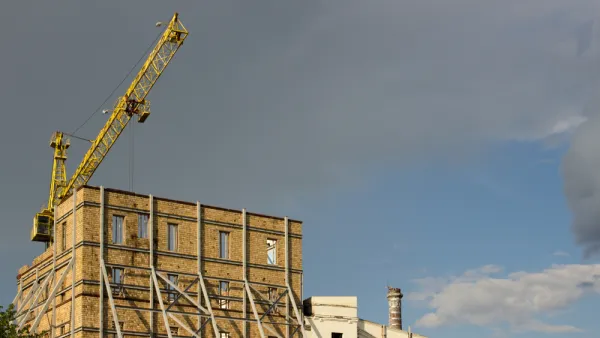There’s more than one way to be excluded from your community.

For decades, activists in Camden, New Jersey, have complained that investment in their city has focused on the downtown and waterfront neighborhoods that attract suburbanites, tourists, and newer residents, to the exclusion of longtime residents in the community. It’s a familiar complaint, the type you might hear from activists in Baltimore about the Inner Harbor. Residents see downtown investment and wonder—why must we depend on the theory of trickle-down economics belief that neighborhoods will be helped by investment downtown? Why can’t we invest in our neighborhoods directly?
Or in other words, as resident Luis Galindez—quoted in Howard Gillette’s book, After the Fall—put it when public funds went toward a new waterfront aquarium in Camden, “We got two and three families living in one house and fish in tanks by themselves . . . we could really have used that money.”
But in Camden, after residents argued for years that there needed to be investment in neighborhoods, a funny thing happened: A vocal group of residents opposed such investment when it came, on the grounds that it would gentrify those neighborhoods.
An example was a plan to demolish and rebuild Camden High School. The state’s Schools Development Authority—which funds and manages school construction in 31 marginalized cities across the state—committed $132.6 million to Camden High. Investment in the school—historically the flagship of the city’s education system and located in the center of Camden’s historically African-American neighborhood—seemed like a direct answer to criticism that investment only happened downtown. Except instead of being lauded by local community members, the announcement deeply divided the community.
In an op-ed, local activist, resident, teacher, and union leader Keith Benson argued that new development is a transparent gentrification tactic:
“The proposal of a new Camden High School is really part of a broader Parkside development strategy intended to benefit a targeted few and victimize lower-income residents. This behavior, sadly, is consistent from our local politicians, but an honest conveyance of this issue would go far in educating our Camden community about what we stand to lose if Camden High is torn down. We, as a community of people who care about our neighbors, must fight this, because our collective future here depends on it.”
The very thing that activists and residents had spent decades advocating for—investment in their neighborhoods—was now being criticized as gentrification. Why?
...
FULL STORY: Why Do Low-Income Residents Oppose Development Even When Displacement Risk Is Low?

Analysis: Cybertruck Fatality Rate Far Exceeds That of Ford Pinto
The Tesla Cybertruck was recalled seven times last year.

National Parks Layoffs Will Cause Communities to Lose Billions
Thousands of essential park workers were laid off this week, just before the busy spring break season.

Retro-silient?: America’s First “Eco-burb,” The Woodlands Turns 50
A master-planned community north of Houston offers lessons on green infrastructure and resilient design, but falls short of its founder’s lofty affordability and walkability goals.

Test News Post 1
This is a summary

Analysis: Cybertruck Fatality Rate Far Exceeds That of Ford Pinto
The Tesla Cybertruck was recalled seven times last year.

Test News Headline 46
Test for the image on the front page.
Urban Design for Planners 1: Software Tools
This six-course series explores essential urban design concepts using open source software and equips planners with the tools they need to participate fully in the urban design process.
Planning for Universal Design
Learn the tools for implementing Universal Design in planning regulations.
EMC Planning Group, Inc.
Planetizen
Planetizen
Mpact (formerly Rail~Volution)
Great Falls Development Authority, Inc.
HUDs Office of Policy Development and Research
NYU Wagner Graduate School of Public Service




























